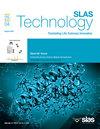Multi-layered data framework for enhancing postoperative outcomes and anaesthesia management through natural language processing
IF 3.7
4区 医学
Q3 BIOCHEMICAL RESEARCH METHODS
引用次数: 0
Abstract
Anaesthesia management is a critical aspect of perioperative care, directly influencing postoperative recovery, pain management, and patient outcomes. Despite advancements in anaesthesia techniques, variability in patient responses and unexpected postoperative complications remain significant challenges. The research proposes a multi-layered architecture named Anaesthesia CareNet for analyzing data from diverse sources to enhance personalized anaesthesia management and postoperative outcome prediction. The architecture is structured into two primary layers: Data processing and Predictive Modeling. In the Data processing layer, advanced Natural Language Processing (NLP) techniques such as Named Entity Recognition (NER), normalization, lemmatization, and stemming are applied to clean and standardize the unstructured clinical data. Generative Pre-trained Transformer 3 (GPT-3), a Large Language Model (LLM) is employed as a feature extraction method, allowing the system to process and analyze complex clinical narratives and unstructured textual data from patient records. This enables more precise and personalized predictions, not only improving anaesthesia management but also laying the groundwork for broader applications in life sciences. The extracted data is passed into the predictive modeling layer, where the Intelligent Golden Eagle Fine-Tuned Logistic Regression (IGE-LR) model is applied. By analyzing correlations between patient characteristics, surgical details, and postoperative recovery patterns, IGE-LR enables the prediction of complications, pain management requirements, and recovery trajectories beyond anaesthesia; the methodology has potential applications in diverse areas such as diagnostics, drug discovery, and personalized medicine, where large-scale data analysis, predictive modeling, and real-time adaptability are crucial for improving patient outcomes. The proposed IGE-LR method achieves higher performance with 91.7 % accuracy, 90.6 % specificity, and 90 % AUC, with a recall of 91.3 %, precision of 90.1 %, and an F1-Score of 90.4 %. By leveraging advanced NLP and predictive analytics, Anaesthesia CareNet exemplifies how AI-driven frameworks can transform life sciences, advancing personalized healthcare and creating a more precise, efficient, and dynamic approach to treatment management.
通过自然语言处理提高术后疗效和麻醉管理的多层数据框架
麻醉管理是围手术期护理的一个关键方面,直接影响术后恢复、疼痛管理和患者预后。尽管麻醉技术取得了进步,但患者反应的可变性和意外的术后并发症仍然是重大挑战。该研究提出了一个名为Anaesthesia CareNet的多层架构,用于分析来自不同来源的数据,以增强个性化麻醉管理和术后结果预测。该体系结构分为两个主要层:数据处理和预测建模。在数据处理层,采用命名实体识别(NER)、规范化、词形化、词干化等先进的自然语言处理(NLP)技术对非结构化临床数据进行清理和标准化。采用生成式预训练变压器3 (GPT-3),一种大型语言模型(LLM)作为特征提取方法,使系统能够处理和分析来自患者记录的复杂临床叙述和非结构化文本数据。这使得更精确和个性化的预测成为可能,不仅改善了麻醉管理,而且为生命科学的更广泛应用奠定了基础。提取的数据被传递到预测建模层,在该层中应用智能金鹰微调逻辑回归(Intelligent Golden Eagle Fine-Tuned Logistic Regression, IGE-LR)模型。通过分析患者特征、手术细节和术后恢复模式之间的相关性,IGE-LR能够预测并发症、疼痛管理要求和麻醉后的恢复轨迹;该方法在诊断、药物发现和个性化医疗等不同领域具有潜在的应用前景,其中大规模数据分析、预测建模和实时适应性对改善患者预后至关重要。该方法准确率为91.7%,特异性为90.6%,AUC为90%,召回率为91.3%,精密度为90.1%,F1-Score为90.4%。通过利用先进的NLP和预测分析,ananesthesia CareNet展示了人工智能驱动的框架如何改变生命科学,推进个性化医疗保健,并创建更精确、高效和动态的治疗管理方法。
本文章由计算机程序翻译,如有差异,请以英文原文为准。
求助全文
约1分钟内获得全文
求助全文
来源期刊

SLAS Technology
Computer Science-Computer Science Applications
CiteScore
6.30
自引率
7.40%
发文量
47
审稿时长
106 days
期刊介绍:
SLAS Technology emphasizes scientific and technical advances that enable and improve life sciences research and development; drug-delivery; diagnostics; biomedical and molecular imaging; and personalized and precision medicine. This includes high-throughput and other laboratory automation technologies; micro/nanotechnologies; analytical, separation and quantitative techniques; synthetic chemistry and biology; informatics (data analysis, statistics, bio, genomic and chemoinformatics); and more.
 求助内容:
求助内容: 应助结果提醒方式:
应助结果提醒方式:


